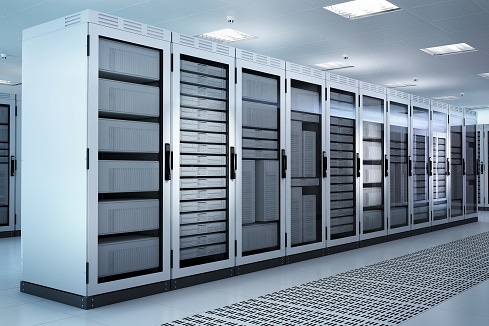When to Justify a Legacy Upgrade
Legacy systems are frequently viewed unfavorably in the IT world, but they’re still delivering IT and business value. The challenge for CIOs and other IT leaders is deciding in which legacy systems to continue to invest.

The first virtual system that became an official commercial product was an operating system that ran on the IBM 370 mainframe in 1972.
Since then, mainframes and other legacy hardware and software have successfully run global businesses. Virtualization and distributed Intel servers have tried to displace many of these systems through the years -- but have they?
What Is a Legacy System?
A legacy system can be defined in two different ways.
The first way is to define legacy as “old” or “antiquated.” This was the marketing thrust of the distributed computing industry in the 1990s when it declared that the “mainframe was dead” and that the era of legacy computing was over.
The second definition of legacy is “made to last.” Recently, a CIO in the hospitality industry told me that his mainframe “hadn’t gone down in over 30 years” -- a phenomenal feat, given that the company’s mainframe processes hundreds of thousands of transactions each day.
This CIO is not alone.
Forty-four of the top 50 banks, healthcare organizations and government agencies, and all top 10 insurance companies use mainframes for mission-critical business. Mainframes also process 30 billion transactions a day and run 90% of all credit card transactions.
However, legacy systems are more than just mainframes.
Microsoft’s Office suite of programs has been run by businesses for more than 25 years and is not going away. Enterprise resource planning (ERP) software like SAP and Oracle have been in place at least that long, too.
These systems stay in place because enterprises have a large body of employees who productively use them, and the systems continue to produce business value. In other cases, there are systems that are too expensive to replace, so they remain.
The challenge for CIOs and other IT and business leaders is deciding which legacy systems merit continuing investment.
The Argument for Legacy System Upgrades
Under what circumstances should you consider a legacy system upgrade investment? Here are four scenarios:
1. When the system is best in class
Legacy systems have the advantage of being stable technology platforms that have delivered business value over time. They have a large ecosystem of system developers and industry specialists who understand both the underlying technology and the industry verticals that the technology supports.
For example, an ERP system that can be tailored to fit the needs of different industry verticals (e.g., retail, heavy manufacturing, finance, etc.) is typically vendor-backed with on-staff technology and industry-specific expertise. The vendor understands the pain points of each industry and has kept pace with new technology trends.
An example (again in ERP) is the move in the last seven years of ERP vendors to cloud-based versions of their systems. This enables customers to continue running the software that they know, but in the cloud, which they now prefer over in-house operations.
In cases like these, vendors have stood behind their products, and the products continue to deliver value to the business. The vendors have also invested in their products for the future. It makes sense to recommend a legacy upgrade.
2. When you have a heavy custom code investment that benefits your business
There are companies that have internally developed thousands of lines of custom code over the years that work with a specific legacy system. This custom code gives the business strategic advantages over a generic, commercial-grade system. Additionally, the company has the internal resources and knowledge to continue supporting this system.
This is a situation where the business stands to lose competitive advantage if it switches to a new, more generic system version.
While legacy system upgrades (and maintenance) because of custom code aren’t popular IT investment choices, they do occur and can be justified for companies that continue to benefit competitively from the custom work they have done.
3. When it's too costly to change
The cost of changing systems goes beyond economics. There is an investment that needs to be made in business process redesign when a system changes. Users need be reskilled in order to work with the new system. In many cases, IT also requires training so it can learn how to best support and enhance the new system.
Office systems are a case in point.
In the office, staples like Microsoft’s Office suite of programs are deeply entrenched. Not only do users know how to work with these -- but they have the additional benefit of interacting with many other companies that use the same system.
Do you go “rogue” and introduce a new office system that technologically might be better -- or stick with what your employees know?
This is a case where it makes sense to invest in a legacy system upgrade, as long as it keeps returning business value.
4. When the system can integrate
The IBM mainframe no longer exclusively runs its proprietary z/OS operation system. It can run many guest systems of Linux, Unix, and Windows as well.
Commercial software like SAP or Oracle ERP no longer functions within its own environment only. These software packages offer hundreds of APIs (application programming interfaces) that enable them to easily integrate with other systems so information can be readily exchanged without a major integration effort.
If you have a legacy system and its technological evolution is being vigorously invested in by its vendor, and if the system is nimble enough to work with any other outside application and technology, you’re well positioned to justify a legacy upgrade investment.
What to Read Next:
Why It's So Hard to Accurately Predict IT Trends
About the Author(s)
You May Also Like







